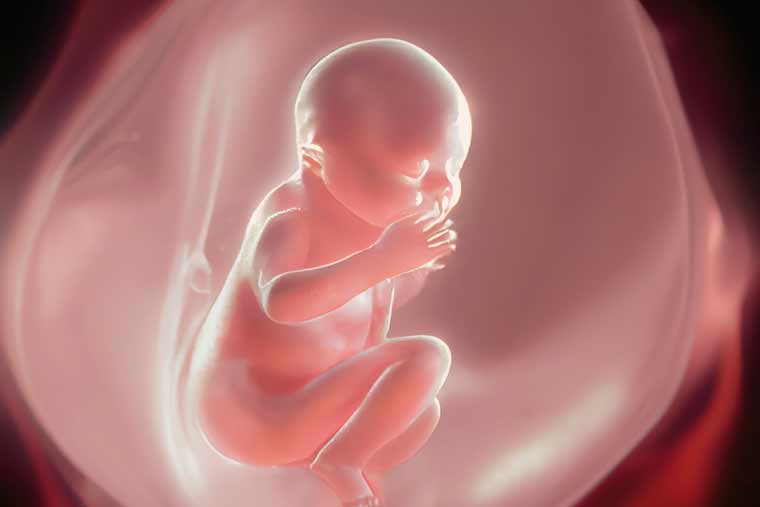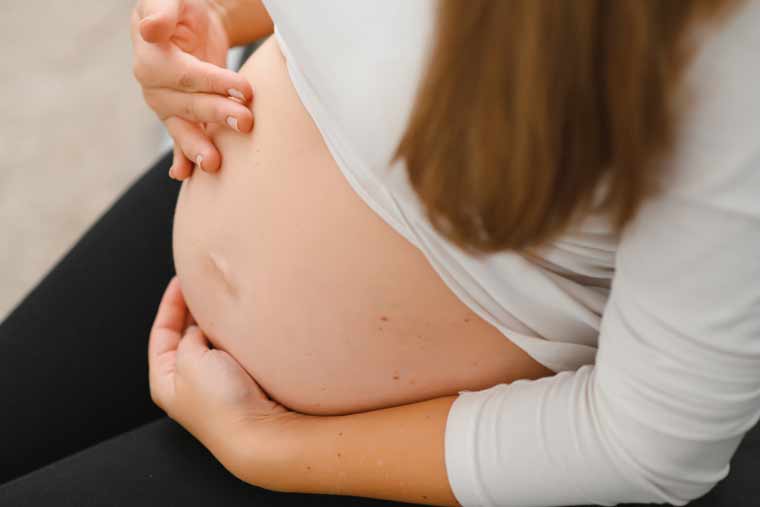Everything you need to know about the second trimester
Ambady Scan
October 5, 2023
Have Any Questions?
Please contact us, if you have any queries
Categories
Everything you need to know about the second trimester
Pregnancy happiness is an emotional state marked by joy, anticipation, and a deep sense of fulfillment. Expectant parents often experience happiness as they prepare to welcome a new life into their family. It encompasses the excitement of feeling the baby’s movements, sharing the news with loved ones, and nurturing dreams of the future. Pregnancy typically spans approximately 40 weeks, divided into three distinct trimesters, each lasting around 14 weeks. As you transition into the second trimester at approximately 14 weeks pregnant, you’ll notice significant changes in both your appearance and how you feel. Many expectant individuals find the second trimester to be the most enjoyable phase of pregnancy, as the morning sickness and fatigue that often accompany the first-trimester start to fade away. Additionally, any initial anxieties tend to decrease during this period.

FETUS DEVELOPMENT IN THE SECOND TRIMESTER
During the second trimester, typically extending from week 14 to the end of week 27, you’ll begin to look and feel more pregnant. It’s worth noting that pregnancy experiences vary widely from person to person. While some may have sailed through the first trimester without experiencing issues like morning sickness, others might still grapple with these symptoms well into their second trimester. Ultimately, this phase is characterized by the emergence of a deeper connection with your growing fetus, as you start to feel its movements, allowing you to settle into the pregnancy. During this time, the fetus undergoes remarkable changes in size, features, and abilities, making it a truly special phase in pregnancy.
Size and Appearance:
As the second trimester begins, the fetus is approximately the size of a lemon, measuring around 3 to 4 inches in length and weighing about 28 to 56 grams. Over the next 14 weeks, it undergoes a remarkable growth spurt, nearly tripling in size. By the end of the second trimester, the fetus reaches a length of around 12 inches and weighs roughly 453 to 907 grams. Its tiny features become more defined, and its body starts to take on a more proportionate appearance.
Special Features and Abilities:
Sensory Development: Around weeks 18 to 20, expectant parents often experience the magical sensation of “quickening,” which is the first perception of fetal movements. The fetus begins to develop its sensory abilities. By mid-trimester, it can hear and respond to sounds from the external world, including the mother’s voice and heartbeat. These fluttering movements grow more pronounced and coordinated as the weeks pass, creating a profound connection between the parents and the growing baby. Taste buds form, setting the stage for preferences that will emerge after birth.
Bone Formation, Hair, and Nails: The fetal skeleton, initially soft and cartilaginous, starts to ossify (harden). This process enables the baby’s bones to become sturdy enough to support its increasing size and movement. Hair follicles develop, and fine, downy hair called lanugo covers the baby’s body. Nail beds form, and tiny fingernails and toenails appear.
Organ Development and Vital Functions:
Cardiovascular System: The fetal heart beats more regularly and pumps an increasing volume of blood. By mid-trimester, the baby’s heart is fully formed and functioning, with the ability to pump blood throughout its body.
Respiratory System: While the fetus doesn’t breathe air in the womb, the respiratory system undergoes critical development. Air sacs, known as alveoli, begin to form in the lungs, preparing the baby for breathing after birth.
Digestive System: The digestive tract matures, and the baby swallows and digests small amounts of amniotic fluid. This practice run prepares the gastrointestinal system for food consumption after birth.
Reproductive Organs: By the end of the second trimester, male and female reproductive organs are distinguishable.

10 AMAZING PHYSICAL CHANGES DURING THE SECOND TRIMESTER
During the second trimester of pregnancy, the body undergoes significant physical changes to accommodate the developing fetus. Although these changes may cause some discomfort, they reveal the extraordinary process of bringing a new life into the world. It is crucial to accept these transformations and seek regular prenatal care to ensure a healthy and positive pregnancy experience.
- Baby Bump Blossoms:
One of the most noticeable physical changes during the second trimester is the emergence of the baby bump. As the uterus expands to accommodate the growing fetus, the abdomen gradually protrudes, becoming more rounded. For many, this is a joyful and visible confirmation of pregnancy that begins to manifest around weeks 16 to 20.
- Skin Changes:
Hormonal fluctuations in pregnancy can bring about various skin changes:
- Pregnancy “Glow”: Many expectant mothers experience a radiant complexion often referred to as the “pregnancy glow.” This is due to increased blood circulation, which can make the skin appear brighter and more vibrant.
- Acne and Pigmentation: On the flip side, some individuals may notice an increase in acne or skin pigmentation changes, such as the appearance of melasma or “mask of pregnancy.” These changes are typically temporary and can be effectively addressed with appropriate skincare practices.
- Stretch Marks: As the abdomen expands, the skin can stretch, leading to the development of stretch marks. While they are common, keeping the skin moisturized with creams or oils may help reduce their severity.
- Breast Changes:
- Breast Enlargement & Darkening Areolas: Hormones trigger the mammary glands to prepare for breastfeeding, leading to an increase in breast size. This enlargement can be accompanied by tenderness and increased blood flow to the area. The areolas, the pigmented areas around the nipples, typically darken during pregnancy.
- Montgomery’s Tubercles: Small bumps on the areolas called Montgomery’s tubercles become more prominent. These glands secrete oils that lubricate the nipples.
- Hair and Nail Changes:
Some expectant mothers may notice changes in hair and nail growth. Pregnancy hormones can lead to thicker, shinier hair for some individuals, as well as a decrease in hair shedding. On the flip side, others may experience changes in hair texture, such as increased frizz or changes in curl pattern. Nails tend to grow more quickly during pregnancy, though some may experience brittleness or changes in texture.
- Weight Gain:
Weight gain is a natural part of pregnancy, and during the second trimester, it becomes more noticeable as the baby and the placenta grow. While the exact amount of weight gain varies, a general guideline suggests gaining around 0.453 to 0.907 kg per week.
- Pregnancy Line and Skin Itching:
The dark line running vertically down the abdomen may appear during the second trimester. Additionally, some women may experience itching of the skin due to stretching. Moisturizing the skin is essential for providing relief.
- Decreased Morning Sickness and Fatigue:
Many individuals find that the morning sickness and fatigue that often accompany the first trimester begin to subside during the second trimester. This can lead to an overall increase in energy and a sense of well-being.
- Changes in Posture:
As the uterus grows, it shifts the body’s center of gravity forward. This can lead to changes in posture, potentially causing lower back pain or discomfort. Engaging in exercises that strengthen the core and back muscles can help alleviate these issues.
- Vaginal Discharge and Changes:
Increased vaginal discharge, often thin and milky, is common during pregnancy due to hormonal changes. However, if discharge changes in color, consistency, or odor, it’s important to consult a healthcare provider to rule out any infections.
- Ligament and Muscle Pain:
Growing ligaments and the expanding uterus can cause discomfort or mild pain in the lower abdomen. This is often referred to as round ligament pain. Gentle stretching and proper body mechanics can help alleviate these sensations.
The second trimester of pregnancy is a remarkable journey of fetal development. The fetus grows significantly in size and appearance, gaining unique features and abilities such as quickening and sensory perception. Organ systems continue to mature, laying the foundation for independent life outside the womb. This trimester, often dubbed the “golden period” of pregnancy, is filled with anticipation and wonder as parents eagerly await the arrival of their precious newborn.
Ambady Scan Centre, established in 1996, has consistently prioritized advancements in technology within the industry. As a result, we have proudly emerged as the leading scanning center in Thrissur. Our commitment to accuracy and reliability is backed by an extensive 25-year experience and state-of-the-art equipment, ensuring that our clients receive the most precise and dependable results.


